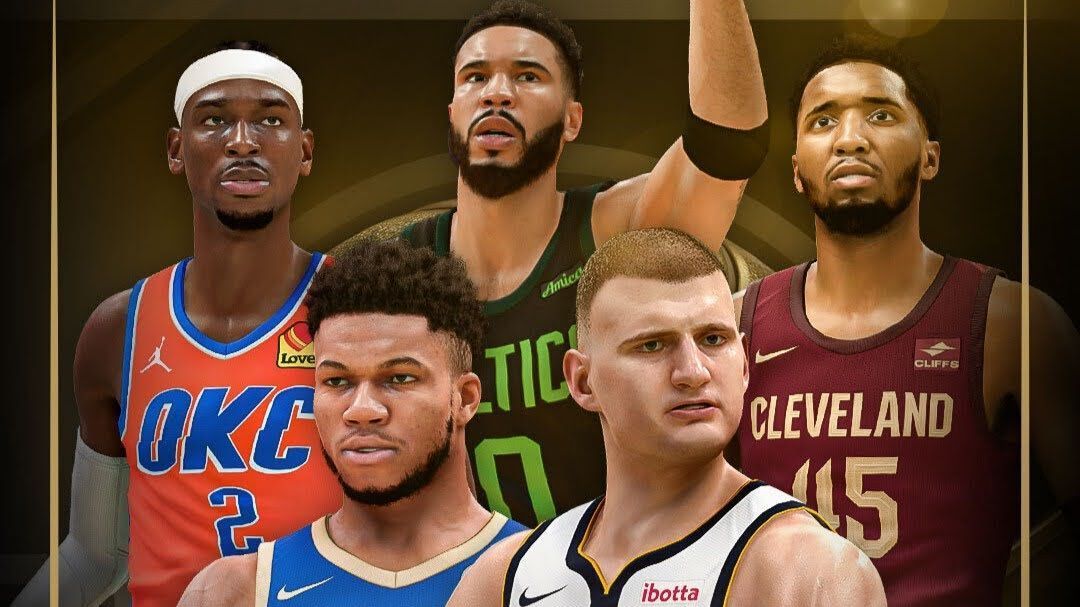## 2K25: Are Your All-Stars Worthy? A Look at ESPN’s All-NBA Team Ratings in NBA 2K25
The digital hardwood is about to get real. NBA 2K25 is on the horizon, and with it comes the hotly anticipated release of ESPN’s official All-NBA team ratings. Will your favorite superstars land the recognition they deserve? Or will some shocking omissions leave you scratching your head?

We’re diving deep into the virtual rosters to analyze how ESPN has ranked the league’s elite for the 2024-25 season. From Giannis’ dominance to Luka’s artistry, from Dame’s clutch shots to Jokic’s playmaking wizardry, we’ll break down the ratings and discuss whether they reflect the on-court reality.

Third Team: Towns, Cunningham, and the Underdog Standouts
The third team of All-NBA, a testament to the league’s remarkable depth of talent, offers a fascinating glimpse into the dynamic interplay between real-world performance and in-game ratings. As with the higher tiers, NBA 2K25 largely mirrors the voting results, placing Karl-Anthony Towns and Cade Cunningham at 93 and 92 OVR respectively, reflecting their crucial roles in their respective teams’ success. However, the presence of players like Tyrese Haliburton, James Harden, and Jalen Williams, all sporting ratings outside the top 20, adds a layer of intrigue to the conversation.
These players, while not receiving the same widespread recognition as their higher-rated counterparts, demonstrate the game’s commendable effort in accurately representing the league’s multifaceted landscape. Haliburton, Harden, and Williams all played significant roles in propelling their teams towards competitive heights, showcasing the power of parity and the emergence of unexpected stars.

The Power of Parity
The spread of talent across the All-NBA teams highlights a fundamental shift in the NBA landscape. Gone are the days when a handful of superteams dominated the league. Today, a greater number of teams boast a core of talented players, leading to more competitive matchups and a more unpredictable playoff race.
This shift is reflected in the NBA 2K25 ratings, which showcase a wider distribution of high-ranking players. While the top-tier talents remain undeniably dominant, the presence of players like Haliburton and Harden in the third team serves as a reminder that success is no longer solely reliant on a select few superstars.
Haliburton, Harden, and Williams: Analyzing the Intriguing Cases
The inclusion of Haliburton, Harden, and Williams in the All-NBA third team, despite their relatively lower ratings, prompts an interesting examination of how the game balances individual player performance with team success. Haliburton’s 90 OVR, for example, may not place him among the elite, but his contributions as a dynamic playmaker and scorer for the Indiana Pacers are undeniable.
Similarly, Harden, despite a slight dip in his overall rating, remains a potent offensive force and a crucial piece of the Philadelphia 76ers’ championship aspirations. Williams, on the other hand, represents the exciting emergence of young talent, showcasing his incredible potential and earning his place on the All-NBA team through sheer grit and determination.
The Impact on Player Value
NBA 2K ratings, beyond their impact on in-game performance, exert a profound influence on player perception, trade value, and overall fan engagement. A high rating can elevate a player’s status, making them a more desirable acquisition in trades and attracting endorsements. Conversely, a lower rating can cast a shadow on a player’s value, potentially hindering their opportunities for growth and recognition.
The case of Jalen Brunson, a promising point guard for the New York Knicks, offers a compelling example. His 93 OVR in NBA 2K25 reflects his rapid ascent as one of the league’s most effective playmakers, drawing attention from fans, analysts, and potential suitors in the trade market.
Beyond the Ratings: The Bigger Picture
While the All-NBA team ratings provide a fascinating snapshot of the NBA landscape, it’s crucial to recognize their limitations and the complexities of accurately representing the ever-evolving world of professional basketball. The relationship between in-game ratings and real-world performance is inherently nuanced, influenced by a multitude of factors beyond individual statistics.
The Relationship Between Gaming and Reality
NBA 2K strives to create a realistic and immersive gaming experience, but the inherent abstractions of translating real-world athleticism into a digital format inevitably introduce discrepancies. Factors like intangible qualities, such as leadership, clutch play, and defensive instincts, are often difficult to quantify and accurately reflect in numerical ratings.
Furthermore, the NBA is a dynamic league, with players constantly evolving, adapting to new roles, and experiencing fluctuations in performance. Capturing these nuances within the confines of a static rating system presents a significant challenge for the developers.
The Role of Community Feedback
The NBA 2K development team recognizes the importance of community feedback in shaping the game’s evolution. Fan discussions, online forums, and social media platforms serve as valuable sources of information, providing insights into player perceptions, rating discrepancies, and areas for improvement.
Gamestanza readers, as dedicated fans and observers of the NBA, play a vital role in this process. Your insights, critiques, and suggestions contribute to the ongoing dialogue and help ensure that NBA 2K remains a faithful and engaging representation of the sport we love.
Looking Ahead
As the NBA continues to evolve and players push the boundaries of athleticism, the challenge of accurately representing the league in NBA 2K will only intensify. Future installments of the game will likely explore innovative methods for capturing the multifaceted nature of basketball, incorporating data-driven analytics, advanced player tracking, and dynamic rating adjustments to better reflect the fluidity of real-world performance.
Gamestanza will continue to analyze and dissect these advancements, providing our readers with in-depth coverage, expert insights, and engaging discussions surrounding the evolving world of NBA 2K.
Conclusion
So, there you have it: the projected All-NBA rosters for 2024-25 as envisioned by the data wizards at 2K. From Jokic’s undisputed dominance to the rising stars like Scoot Henderson making their mark, the virtual hardwood paints a picture of both established greatness and exciting new talent. This deep dive into the game’s ratings reveals a fascinating snapshot of the league’s current landscape, highlighting the ever-evolving power dynamics and predicting potential breakout performances. But what does this mean for the real-life NBA? While 2K’s predictions are undoubtedly intriguing, they serve as more than just a fun pre-season thought experiment. They spark conversation, fuel debate, and ultimately ignite our anticipation for the upcoming season. As we watch the real-life games unfold, we’ll be able to see which virtual predictions hold true and which surprise us with unexpected twists and turns. One thing’s for sure: the 2024-25 season promises to be a thrilling ride, filled with unforgettable moments and legendary performances. Will the virtual All-NBA teams become the blueprint for real-world success, or will the court itself rewrite the narrative? Only time will tell.
